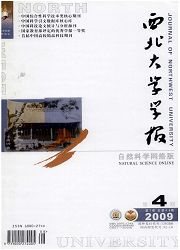

 中文摘要:
中文摘要:
目的考虑在Hill限制性三体问题的条件下,研究太阳帆从地球附近的圆轨道到人工拉格朗日点的轨道转移问题。方法利用能量分析的方法,在地球附近的停泊轨道施加脉冲同时展开太阳帆,让太阳帆进入人工拉格朗日点的转移轨道,在无主动控制的情况下,太阳帆以某一姿态角沿转移轨道被动稳定地飞行到人工拉格朗日点。结果利用解析方法分析了轨道转移的理论最优值,并与数值结果进行比较发现两者非常接近。结论当太阳帆的姿态角保持不变的情况下,太阳帆的姿态角决定了太阳帆的广义能量常数。姿态角在几个区域内时,存在着最优转移轨道。在这些区域内,可以选择合适的姿态角使得从某一个轨道高度到人工拉格朗日点的转移能量最小,同时转移时间也较小。
 英文摘要:
英文摘要:
Aim To study the orbit transfer problem of solar sails from a circular orbit around the Earth to the artificial Lagrange points under the conditions of Hill's restricted three-body problem. Methods Energy analysis method is used. In the parking orbit around the Earth, solar sail is expanded and the impulse is applied simultaneously. Then solar sail flies into the transfer orbit of artificial Lagrange point. Without active control, under certain attitude angle, solar sail moves into artificial Lagrange point stably. Results The analytical method is used to analyze the theoretical optimum of the orbital transfer, the result is close to the value of numerical result. Conclusion When the solar sail's attitude angle remains unchanged, it determines the constant of generalized energy. If attitude angle stays in several areas, an optimal transfer orbit exists. In these areas, the right attitude angle can be chosen to minimize the transfer energy from a certain orbit height to artificial Lagrange point. Meanwhile the transfer time is also shorter.
 同期刊论文项目
同期刊论文项目
 同项目期刊论文
同项目期刊论文
 期刊信息
期刊信息
